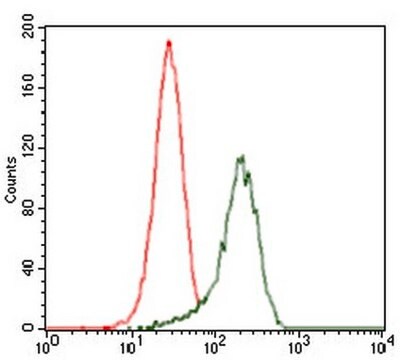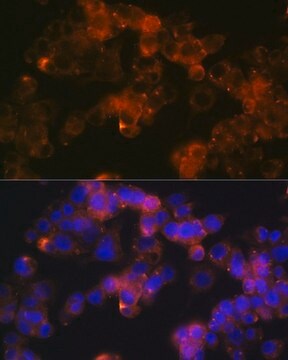S8321
Anti-Sonic Hedgehog antibody, Mouse monoclonal
clone SH154, purified from hybridoma cell culture
Synonym(s):
Anti-Shh
About This Item
IHC
WB
indirect ELISA: 2 μg/mL
western blot: 2 μg/mL using recombinant mouse SHH peptide
Recommended Products
biological source
mouse
Quality Level
conjugate
unconjugated
antibody form
purified immunoglobulin
antibody product type
primary antibodies
clone
SH154, monoclonal
form
buffered aqueous solution
species reactivity
human, rat, mouse
concentration
~2 mg/mL
technique(s)
immunohistochemistry: 1:500 using formaldehyde-fixed human tissue sections
indirect ELISA: 2 μg/mL
western blot: 2 μg/mL using recombinant mouse SHH peptide
isotype
IgG1
UniProt accession no.
shipped in
dry ice
storage temp.
−20°C
target post-translational modification
unmodified
Gene Information
human ... SHH(6469)
mouse ... Shh(20423)
rat ... Shh(29499)
General description
Anti-Sonic Hedgehog antibody recognizes human, rat and mouse Shh.
Specificity
Application
Biochem/physiol Actions
Physical form
Disclaimer
Not finding the right product?
Try our Product Selector Tool.
related product
Storage Class Code
10 - Combustible liquids
WGK
WGK 3
Flash Point(F)
Not applicable
Flash Point(C)
Not applicable
Personal Protective Equipment
Choose from one of the most recent versions:
Already Own This Product?
Find documentation for the products that you have recently purchased in the Document Library.
Articles
Cancer stem cell media, spheroid plates and cancer stem cell markers to culture and characterize CSC populations.
Our team of scientists has experience in all areas of research including Life Science, Material Science, Chemical Synthesis, Chromatography, Analytical and many others.
Contact Technical Service






